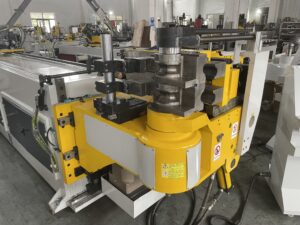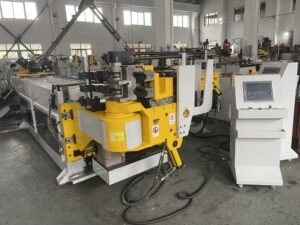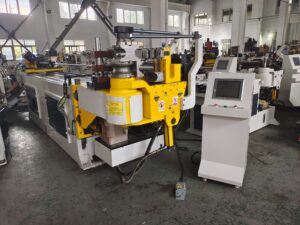What Is the Ideal Bend Diameter for Pipe Bending?
Pipe bending is a critical process in manufacturing, construction, and engineering, requiring precision to ensure structural integrity and performance. One of the most important parameters in this process is the tube diameter, which determines the curvature of the pipe without causing defects like ovality, wrinkling, or material weakening.
The bend diameter—also referred to as the centerline radius (CLR)—plays a vital role in determining the success of a tube.
Understanding Bend Diameter in Pipe Bending
The bend diameter is the distance from the center of curvature to the centerline of the pipe. It is typically expressed as a multiple of the pipe’s outer diameter (D). For instance, a tube diameter of 3D means the radius is three times the pipe’s outer diameter.
Why is Bend Diameter Important?
- Prevents Deformation: An insufficient tube diameter can cause wall thinning, ovality, or buckling.
- Maintains Flow Efficiency: Hydraulic and pneumatic systems require smooth bends to minimize pressure drops.
- Ensures Structural Strength: Correct bending reduces stress concentrations that could lead to failure.
Key Factors Affecting the Ideal Bend Diameter
- Material Properties
- Ductile materials (e.g., aluminum, copper) allow tighter bends (lower tube diameter).
- Brittle materials (e.g., cast iron) require larger bend diameters to avoid cracking.
- Wall Thickness (Schedule)
- Thin-walled pipes need larger bend diameters to prevent collapse.
- Thicker pipes can withstand tighter bends but may require more force.
- Bending Method
- Mandrel Bending: Allows tighter bends with minimal deformation.
- Press Bending: Typically requires a larger tube diameter.
- Rotary Draw Bending: Offers precision for complex profiles.
- Application Requirements
- HVAC Systems: Often use 2D-3D bends for smooth airflow.
- Oil & Gas Pipelines: Typically require 5D-7D bends to reduce stress.
Industry Standards for tube Diameter
| Material Type | Typical Bend Diameter (Multiples of OD) |
|---|---|
| Carbon Steel | 3D – 5D |
| Stainless Steel | 3D – 4D |
| Copper | 2D – 3D |
| PVC | 5D – 7D |
These values serve as general guidelines, but specific applications may require adjustments based on pressure, temperature, and fatigue considerations.
Case Study: Optimizing tube Diameter in Automotive Exhaust Systems
Challenge:
An automotive manufacturer faced pipe failure in stainless steel exhaust systems due to overly aggressive bending.
Solution:
- Extended the tube diameter from 2D to 3.5D.
- Used mandrel bending to reduce ovality.
Result:
- 30% reduction in material stress.
- Increased lifespan of exhaust systems under thermal cycling.
Selecting the Right Bend Diameter
The bend diameter is a fundamental aspect of pipe bending that directly impacts functionality and durability. While industry standards provide useful baselines, engineers must consider material properties,and application needs to determine the tube diameter for each project.




